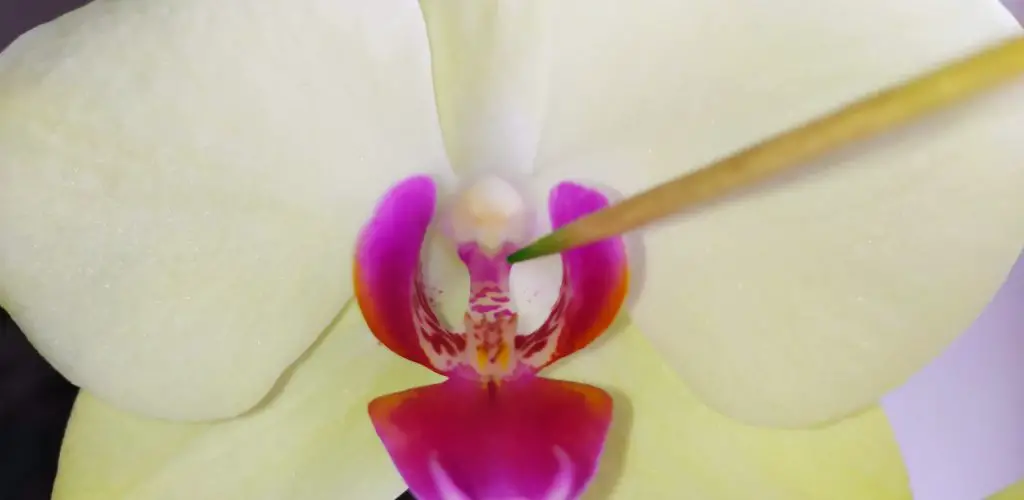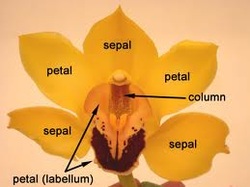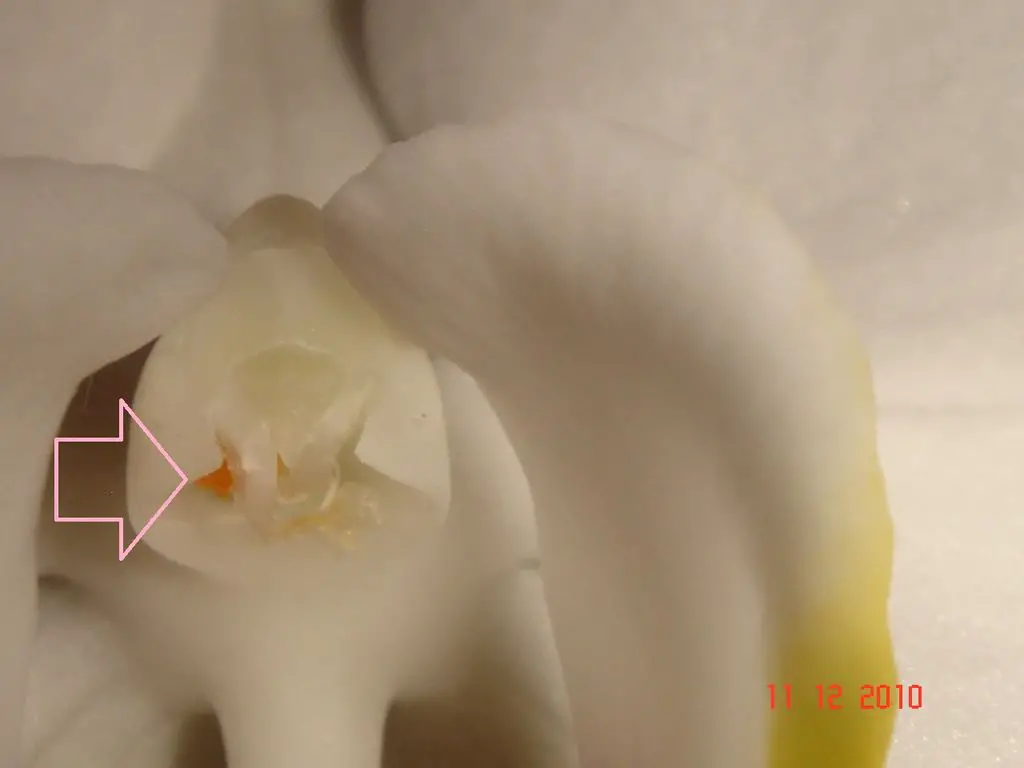Seed propagation of orchids is interesting but painstaking work that requires patience and professional skills from the grower. Nevertheless, nothing is impossible here, and many lovers of orchid plants are happy to self-pollinate their plants and get excellent quality seeds from them. The proposed material will tell you how to pollinate orchids and get seeds at home and what orchid seeds look like.

how to get orchid seeds from plant and how to pollinate orchids
To obtain orchid seeds, you must pollinate the flower yourself. And for this, you need to understand well its structure.
Orchids appeared on our planet later than many other flowering plants, so they had to develop their own competitive mechanisms for attracting pollinators:
- long lifespan of each individual flower;
- alternate dissolution of flowers in the inflorescence;
- long flower arrows, carrying inflorescences from the shade of tree crowns;
- a special shape of one of the petals (lips), adapted as a “landing site” for insects;
- sticky pollinaria – compact lumps of pollen grains, combined in the form of a waxy mass.

It is pollinaria (otherwise, pollinia or anthers) that will need to be removed from the flower in order to pollinate the orchid artificially. It is easier to find these formations if you know which parts the orchid flower is divided into:
| Part of flower | Description |
| Sepalia | Three sepals are located along the outer contour of the flower. |
| Petals | Two petals are located along the inner contour along the horizontal axis, opposite each other. |
| Lip (labellum) | Three fused modified petals are located in the center of the flower in the form of a platform, a cup, a jug, etc. |
| Column | The reproductive organ is located in the very center of the flower in the form of a small “column”. |
Pollinaria orchids are located inside the column. It is with this organ that it will be necessary to work when carrying out artificial pollination.
Important! Despite the fact that all other parts of the flower serve only to attract insects and are not of great importance for the very process of artificial pollination, they must be handled carefully. Flowers with severe mechanical damage are less pollinated.
Read also Do You Cut Off Dead Orchid Stems?
orchid pollination methods
For pollination, a flower is selected that bloomed 3-4 days ago. By this time, the pollen is already well matured and becomes suitable for fertilization. You can take older flowers, but only those that retain freshness.

The essence of artificial pollination is to transfer Pollinaria from the top of the column to its bosom.
Pollinaria are clearly visible at the top of the column, usually in the form of two grains. They are covered with a lid on the outside, just below there is a depression a sinus.
The procedure requires a thin wooden skewer or toothpick. The pollination technique is as follows:
- With the edge of a skewer, the cap of the column is pushed on, and the anthers are removed. They are sticky, so they stick well to the tip of the instrument.
- Anthers are laid in the column bosom.
There are two types of artificial pollination – cross-pollination and self-pollination:
| Pollination type | Features: |
| Self-pollination | The whole procedure is carried out on one flower, which is pollinated with its own pollen. |
| Crossover | The procedure is carried out on two flowers from different plants by exchanging pollen. |
Thus, with self-pollination, it is possible to obtain seeds of a particular orchid variety. When crossed – plants with new properties and color of the corolla.
Tip # 1. Experienced growers advise pollination on the terminal flowers. Practice shows that they set seeds better.
With cross-pollination, orchids of the same type are used Phalaenopsis interbreed with Phalaenopsis, Vandas with Vandas, etc. Inter species crossing is a more complicated process and is not performed at home.
You may also like Best Bark For Orchids.
Ripening and collecting orchid seeds
It is possible to understand whether pollination has taken place literally within the next few days according to a number of signs:
- on the second day after the procedure, the sinus of the column where the pollen was placed begins to close and overgrow;
- in a few days, the petals will fade, but the flower will firmly hold on to the peduncle;
- the peduncle will begin to turn green and thicken.
The thickening of the peduncle is the ovary. If pollination does not take place, the peduncle will simply dry out and the flower will fall off, as usual.
The ovary begins to form within a week after pollination. If during this period the flower simply fades, then the procedure was not successful, and you can repeat it on another flower.
Ripening orchid seeds is a long process. It lasts 8-9 months, during which an elongated capsule with longitudinal grooves gradually forms from the ovary. Most of the time this box will retain an intense green color. A signal that ripening is nearing completion is a change in its color it can first become yellowish and then brown.
When the capsule begins to change color, you need to take measures to prevent accidental spilling of seeds:
“I had a bad experience: the box suddenly burst, and the whole window sill was strewn with orchid dust. She was still yellow and not dry, and I did not think that this would happen. Therefore, now I try to put a bag on it in time”.
The box is cut from the peduncle after drying. Seed collection can be done immediately after cutting:
- put the box on a white paper sheet;
- open it along the groove valves on one side;
- taking the box by the petiole, knock its upper end on the paper.
Orchid seeds do not completely spill out immediately. Most of them can get stuck inside the pulp, which is lined with the inner surface of the fruit. Therefore, you need to knock until all the seeds pop out of the box.
Orchid seeds look like cream or brown dust. They are ready for sowing immediately after collection.
Check also Dendrobium Orchid Care After Flowering.
Secrets of artificial pollination: expert advice
To increase the chances of pollination and get good seeds, there are a few important things to consider:
“If the air humidity in the apartment is insufficient, it is better to take young flowers for pollination. In older ones, the top of the column dries up, and the fertility of the organ decreases. In general, orchids that are used for seed propagation should be kept in an ideal microclimate. Everything can play a role here – humidity, air temperature, and light intensity. If it is not possible to create the necessary conditions in winter, it is better to postpone pollination until spring or summer. “
How to save harvested seeds if you can’t sow them right away?
You can save the harvested seed in an airtight container in the refrigerator. For this, the seeds are divided into small portions, each of which is wrapped in a separate piece of paper. Paper bags are folded into a food container, closed with a lid, and stored on the refrigerator door.
How many flowers can be pollinated simultaneously on one orchid?
If the plant is strong enough, it will be able to easily tolerate 2-3 pods. But there is no special sense in this because each fruit of an orchid contains up to a million seeds. Therefore, even one well-ripened box is enough to get a fairly large number of seedlings. In addition, if only one fruit is set on the peduncle, the orchid can continue to bloom further. With a large number of ovaries, flowering will stop for a while.
